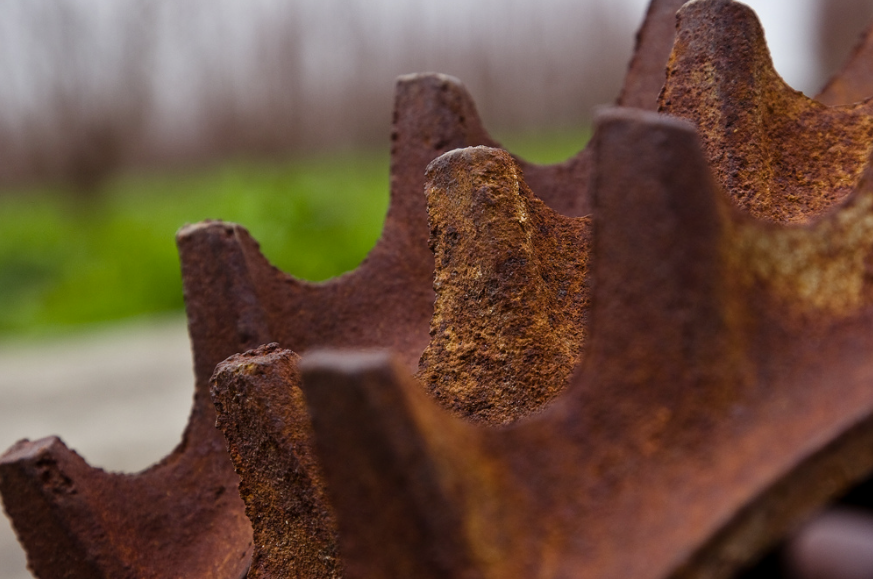
[Image above] Rusted metal. Credit: industrial-5; Flickr CC BY-NC-ND 2.0
Commercialized solar energy use in the U.S. spiked 33% in 2014, thanks to soaring solar industry expansion, and its applications are becoming more widespread as the world moves to a cleaner energy future. But the challenge facing researchers to date has been mastering efficient capture and storage of solar power.
Recently, solar cells made from perovskites have been making news for their great potential for high efficiency and low cost—but more research is needed to scale-up this technology for manufacturing use.
But what if the key to large-scale solar power storage is rusting before our eyes?
Researchers at Stanford University (Stanford, Calif.) found that ordinary metal oxides, such as rust, can be made into solar cells capable of splitting water into hydrogen and oxygen, according to a Stanford News report.
“Using solar cells to split H2O by day is a way to store energy for use at night. The photons captured by the cell are converted into the electrons that provide the energy to split water,” the release explains. “Recombining hydrogen and oxygen after dark would be a way to reclaim that energy and ‘dispatch’ power back into the electrical grid—without burning fossil fuels and releasing more carbon into the atmosphere.”
Metal oxides’ solar power potential isn’t a novel concept—but they’re known to be less efficient than silicon solar cells when it comes to photon to electron conversion.
The Stanford team found that “as metal oxide solar cells grow hotter, they convert photons into electrons more efficiently. The exact opposite is true with silicon solar cells, which lose efficiency as they heat up,” the report explains.
“We’ve shown that inexpensive, abundant, and readily processed metal oxides could become better producers of electricity than was previously supposed,” William Chueh, assistant professor of materials science and engineering at Stanford, says in the report. The October/November 2015 issue of the ACerS Bulletin detailed Chueh as one of the NSF’s 2015 CAREER awardees.
Check out this video from Chueh’s lab that shows metal oxide solar cells side-by-side inside a column of water. The cells are producing electrons whose energy is used to split hydrogen and oxygen atoms in water. The numbers above each cell show temperature of the water in degrees Celsius (75 and 113 degrees Fahrenheit, respectively). The warmer side produces more bubbles, showing that metal oxide solar cells become more efficient when they are warmer. The opposite is true for silicon-based solar cells, which become less efficient as they get warmer.
Credit: Stanford University’s School of Engineering; YouTube
This new and surprising breakthrough could mean major changes in how we produce, store, and consume energy, with more efficiency and cost-effectiveness than we ever thought possible.
“By combining heat and light, solar water-splitting cells based on metal oxides become significantly more efficient at storing the inexhaustible power of the sun for use on demand,” says Chueh.
The study, published in Energy and Environmental Science, is “Significantly enhanced photocurrent for water oxidation in monolithic Mo:BiVO4/SnO2/Si by thermally increasing the minority carrier diffusion length” (DOI: 10.1039/C6EE00036C).
